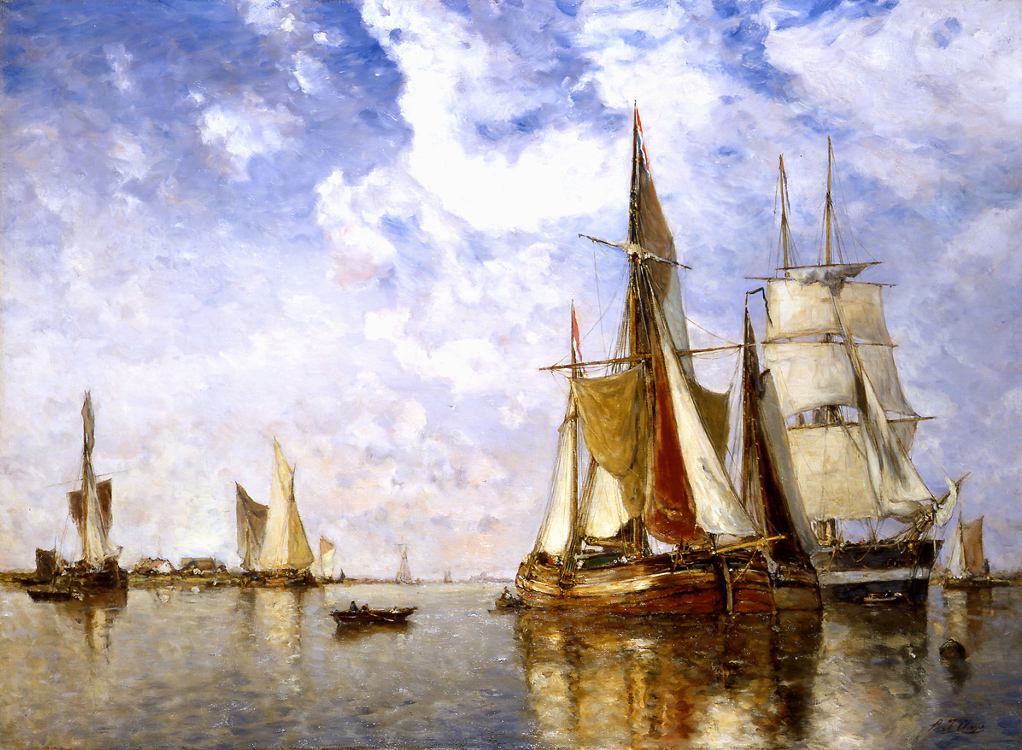|
Shipping on the Scheldt
PAUL JEAN CLAYS
(1819 - 1900)
Shipping on the Scheldt
Oil on canvas
26 ¾ x 36 ½ inches
Signed
He knows how to give his seascapes harmony and grandeur. A sort of penetrating melancholy envelops all of the works that Mr. Clays painted. One feels that the painter did not only utilize his hand; that he puts in the works that come from his thoughts the enthusiasm that seized him before he created the works. The artist is more than a virtuoso; he a contemplator, a man who feels moved by the presence of Nature which is so beautiful, so imposing, so difficult to translate, that even the most convinced hesitate before attempting it.
- Eugène Montrosier, Les Artistes Modernes: Peintres de Genre (Paris, Librairie Ch. Tallandier), pg. 39
As a marine artist, Paul-Jean Clays excelled in creating coloristic harmonies and personal interpretations that were gleaned from his experience aboard many ships as a young man. Forging a new direction in marine art, he broke away from Romantic preoccupation with tormented sky and tempestuous weather depicting, instead, the calm nature of the sea. He concentrated on the areas around the Lower Scheldt and the river Thames, infusing both with reminiscences of seventeenth century Dutch naval painting. His early work was influenced by Realism before establishing his own style more fully.
Paul-Jean Clays was born on November 27, 1819 in Antwerp, Belgium – there are several variations of his birth date, some ranging as far back as 1817. His father was a tax collector. Since the days of his childhood Paul-Jean admired the atmosphere of the beach and learned to appreciate nature. He went on several sea voyages becoming intensely interested in sailors and ships. He often journeyed to Ostende and wandered along the coast sketching, not returning until “the rare vacations that were accorded him by his family came to an end.” (Montrosier, 37)
As a young boy his father enrolled him in the school at Boulogne, until one day “he escaped from his cage.” (Georges Eekhoud, “Paul-Jean Clays, Gazette des Beaux-Arts XXIII, 1900, 497) After ending his studies early, without notifying anyone why he left or where he was headed, he immediately pursued his desire to become a sailor and approached some boat men who were hospitable towards him and took him on as an apprentice sailor. It was during these years on the sea that he learned of the “perils of the life of a sailor.” (Eekhoud, 497) It was also important because “The years spent on the roaring waves, the element he was to paint, were decisive for an extreme sensitivity and the exact feeling for colors given by sea and sky during the tempest days.” (Lexicon of the Belgian Romantic Painters, Antwerp: International Art Press, 1981, no page) He had discovered his artistic talent. It was natural, then, that after returning to Belgium, he became interested in pursuing the theme of the sea.
Still a young man, Clays left what had become his inspiration, the sea, and moved to Paris in search of official artistic training. He studied under Horace Vernet, a well-known military painter. In Clays’ attempt to absorb Vernet’s methods and advice, he was only disappointed since he was told that his art lacked direction. Instead of remaining with the artist, he entered the atelier Suisse, a popular atelier for many aspiring artists where one concentrated most heavily on figure drawing. Outside of the lessons received at the atelier Suisse, he also “sought out the secrets of the countryside around Paris, often elusive in its particular poetry.” (Montrosier, 38)
One of these areas outside of Paris was Saint-Ouen. Here there were “corners of greens, great hundred year old trees, some patches of prairie animated by the beasts in pasture, with, all around, the Seine unfolding the long course with its limpid water.” (Montrosier, 38) The Barbizon school and the interest in landscape painting in France at this time were exerting an influence over his thematic choices.
Clays remained at the epicenter of the art world for a very short time. Since his childhood interest in ships and marinas remained strong, he returned to his home country of Belgium after absorbing the French atelier system and coming into contact with the new trends in art that were taking hold of Paris. Through seeing marine works on display in museums such as the Louvre, he further directed his vision towards depictions of the sea. He returned to the seacoast, upon which he could now gaze with a new perspective.
After returning to Belgium – Brussels, specifically- he entered the atelier of the celebrated marine painter Jean-Antoine Théodore Gudin. Here he was introduced to the Romantic conception of the sea and its struggle, but soon realized that this type of typical approach to the sea did not suit his style or interest. Too often painters were depicting the sea in an exaggerated way, far removed from reality. Clays was interested in other representations. From this date he established a strong relationship with the banks of the Escaut estuary and the area around Dordrecht.
Outside of his purely artistic pursuits, he also became involved with the salon of the mathematician Adolphe Quételet, the Director of the Brussels Observatory and also that of Du Jardin, both highly influential salons. Many other artists and leading intellectuals of the period radiated towards this diverse group. It was through these gatherings that “Clays learned much more by his conversations with these enlightened men than by his visits to the atelier of his master.” (Eekhoud, 499) In 1856, Clays married Quételet’s daughter, Marie-Isaure, who unfortunately died just eight years later.
Clays maintained his ties with the Parisian art world by participating regularly in the annual Salon, in addition to those in Antwerp. One of his earliest exhibitions began in Brussels where, in 1851, he earned a gold medal. He fist debuted at the Parisian Salons, however, in 1855 with Cote de Flandre; marée haute(Coast of Flanders; high tide) and Plage des environs de Tréport; marée base (Beach near Tréport; low tide). During the following years, Clays made residence in both Brussels and Paris and remained active at the Salons. Between 1859 and 1874 he took an extended leave from the Parisian art scene, however, and exhibited only once, showing one work that was based on the port of Southampton, England. After his return in 1874, he exhibited his marine views yearly. Clays also participated in the Exposition Universelle of 1867 where he earned a second class medal. Paul Mantz (Gazette des Beaux-Arts, July 1867) writes that:
He [Clays] is Flemish in his manner of painting; and in his choice of landscapes is somewhat like the Dutch. He does not paint the sea, but the Scheldt where it widens, and those gray and light waters which bear you in a steamer from Moerdyk to Rotterdam. With a proud feeling for these things, he expresses in the calme plat, in the gros temps, the humidity of the skies of Western Flanders, the sleep of the calmed water, or the caress, sometimes menacing, of the breeze which makes little, uneasy waves shiver around the Koffs loaded to the brim. The water has found in Clays a marvelously exact painter; he gives it movement, limpidity, life; and, with happy talent, he knows the spots where the sun’s rays cross it to fill it with light.
This same year he was also named Chevalier de la Légion d’Honneur and was quoted as being one of the greatest marine painters of the time. Montrosier commented that “Of all the foreign painters whose names figure at each yearly Salon of Paris, Mr. Clays is assuredly one of the most interesting. He has learned how to conquer a place at the top rank among French artists. ” (Montrosier, 39)
In 1856 he relocated again, this time from Brussels to Antwerp at which point he became the official painter of the banks of the Scheldt. Unfortunately, there were few resources and artists for him in Antwerp and he found it necessary to sell his work at drastically low prices. To become financially sufficient, he was forced to become a sailor once again. He worked on a government ship which traveled across the North Sea. This time he looked on the sea without the Romantic preoccupations that had so dominated his studies. He started to value the sea for its untouched beauty, without any adjustments or additions made by creative license. During this period, he sojourned in Brussels and then went to Antwerp, a key moment in his career since “The real successes of this artist date from his sojourn in Antwerp.” (Eekhoud, 500)
Apart from his marine scenes, he also painted genre scenes which included Lendemain de naufrage (Day After the Wreck), and Retour de pêche (Return from a Fishing Trip), but still introduced the element of the sea into these works.
His paintings had come to be revered for their fresh and truthful qualities, which were in contrast to many other painters who relied too heavily on an idealized version of the reality of the sea. It was written at the time that “For the first time a sincere painter applies himself to showing the sound joy of his eyes.” (Eekhoud, 502) After a productive career and several awards, such as the Order of Leopold, Clays died in Brussels on February 10th, 1900. In a final summation of his work Eekhoud wrote that “The greatest merit of Paul-Jean Clays…was to have released his genre of painting from the conventions and the routines which made marine imagery a tributary of the historical genre.” (495) It was this departure from the established traditions that attracted audiences and garnered their praises, showing a new direction in the history of marine painting in the nineteenth century. |
|
|
INDEX - A VISUAL HISTORY
>
<
|
| Virtual Exhibition Index
|
next
prev
|
 AIRY, ANNA (1882 - 1964)The Little Mirror AIRY, ANNA (1882 - 1964)The Little Mirror |
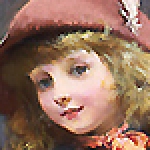 BARBER, CHARLES BURTON (1845 - 1894)Off to School BARBER, CHARLES BURTON (1845 - 1894)Off to School |
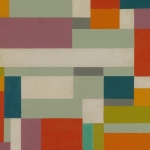 BOLOTOWSKY, ILYA (1907 - 1981)Abstract BOLOTOWSKY, ILYA (1907 - 1981)Abstract |
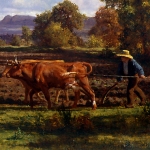 BONHEUR, AUGUSTE (1824 - 1884)Ploughing in the Nivernais BONHEUR, AUGUSTE (1824 - 1884)Ploughing in the Nivernais |
 BONHEUR, ROSA (1822 - 1899)Couching Lion BONHEUR, ROSA (1822 - 1899)Couching Lion |
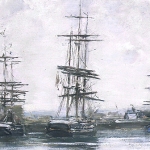 BOUDIN, EUGENE LOUIS (1824 - 1898)La bassin, Deauville BOUDIN, EUGENE LOUIS (1824 - 1898)La bassin, Deauville |
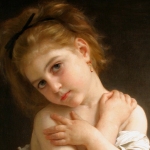 BOUGUEREAU, WILLIAM A. (1825 - 1905)La Frileuse BOUGUEREAU, WILLIAM A. (1825 - 1905)La Frileuse |
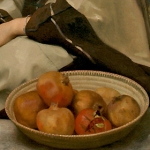 BOUGUEREAU, WILLIAM A. (1825 - 1905)Marchande de grenades (Pomegranate Seller) BOUGUEREAU, WILLIAM A. (1825 - 1905)Marchande de grenades (Pomegranate Seller) |
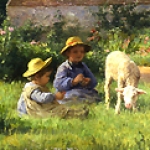 CHAIGNEAU, JEAN F. (1830 - 1906)Le Jardin de l'Artiste CHAIGNEAU, JEAN F. (1830 - 1906)Le Jardin de l'Artiste |
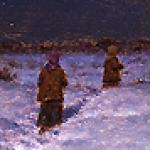 CHOULTSE, IVAN F. (b.1877)Nuit de Mars, Russie CHOULTSE, IVAN F. (b.1877)Nuit de Mars, Russie |
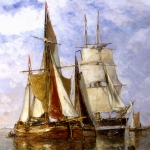 CLAYS, PAUL JEAN (1819 - 1900)Shipping on the Scheldt CLAYS, PAUL JEAN (1819 - 1900)Shipping on the Scheldt |
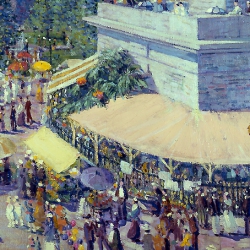 COALE, GRIFFITH BAILEY (1890 - 1950)The Baltimore Flower Mart - 1915 COALE, GRIFFITH BAILEY (1890 - 1950)The Baltimore Flower Mart - 1915 |
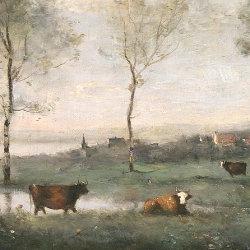 COROT, JEAN-BAPTISTE-CAMILLE (1796 - 1875)Pâturage dans les marais (Souvenir des environs d'Amiens) COROT, JEAN-BAPTISTE-CAMILLE (1796 - 1875)Pâturage dans les marais (Souvenir des environs d'Amiens) |
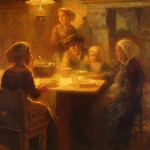 CORTÈS, EDOUARD LEON (1882 - 1969)The Breton Family CORTÈS, EDOUARD LEON (1882 - 1969)The Breton Family |
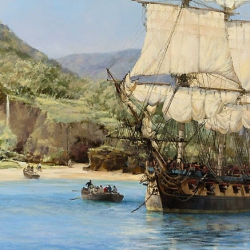 DAWSON, MONTAGUE (1895 - 1973)The Pirate's Cove, Wafer Bay, Cocos Island DAWSON, MONTAGUE (1895 - 1973)The Pirate's Cove, Wafer Bay, Cocos Island |
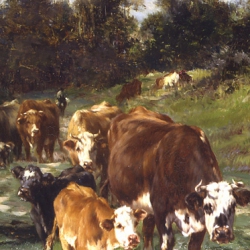 DIÉTERLE, MARIE (1856 - 1935)Troupeau dans un chemin creux DIÉTERLE, MARIE (1856 - 1935)Troupeau dans un chemin creux |
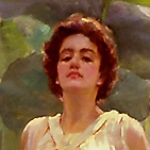 DRUMMOND, ARTHUR (1871 - 1951)Victorian Fantasy DRUMMOND, ARTHUR (1871 - 1951)Victorian Fantasy |
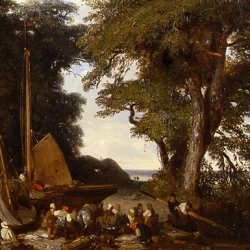 DUPRÉ, JULES (1811 - 1889)Environs de Plymouth DUPRÉ, JULES (1811 - 1889)Environs de Plymouth |
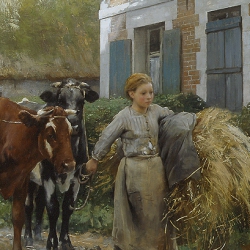 DUPRÉ, JULIEN (1851 - 1910)La rentrée au village DUPRÉ, JULIEN (1851 - 1910)La rentrée au village |
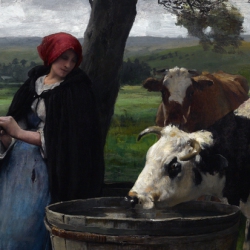 DUPRE, JULIEN (1851 - 1910)La Prairie DUPRE, JULIEN (1851 - 1910)La Prairie |
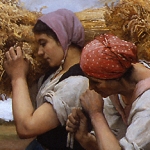 DUPRE, JULIEN (1851 - 1910)Glaneuses DUPRE, JULIEN (1851 - 1910)Glaneuses |
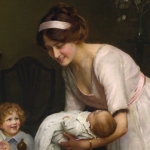 ELSLEY, ARTHUR J. (1860 - 1952)Good Night ELSLEY, ARTHUR J. (1860 - 1952)Good Night |
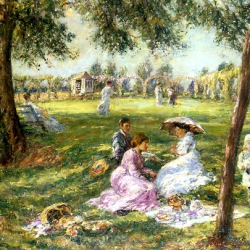 FISHER, R.A., WILLIAM MARK (1841-1923)In the Garden FISHER, R.A., WILLIAM MARK (1841-1923)In the Garden |
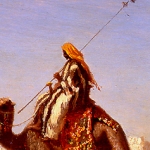 FRERE, CHARLES THEODORE (1814 - 1888)A Caravan Crossing the Desert FRERE, CHARLES THEODORE (1814 - 1888)A Caravan Crossing the Desert |
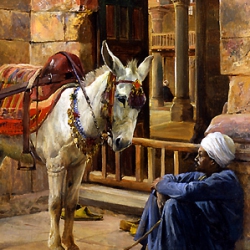 GIRARDET, EUGENE ALEXIS (1853 - 1907)Outside the Mosque GIRARDET, EUGENE ALEXIS (1853 - 1907)Outside the Mosque |
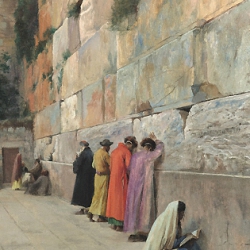 GIRARDET, EUGENE ALEXIS (1853 - 1907)The Wailing Wall GIRARDET, EUGENE ALEXIS (1853 - 1907)The Wailing Wall |
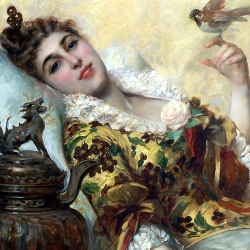 HERBO, LEON (1850 - 1907)La Charmeuse HERBO, LEON (1850 - 1907)La Charmeuse |
 ISRAELS, ISAAC (1865 - 1934)Dancing at the Moulin de la Galette ISRAELS, ISAAC (1865 - 1934)Dancing at the Moulin de la Galette |
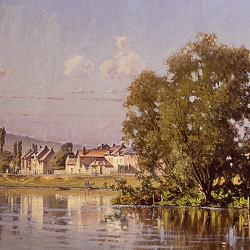 JOUBERT, LEON (fl.1883 - 1900)Un Coin de Seine a Lavacourt JOUBERT, LEON (fl.1883 - 1900)Un Coin de Seine a Lavacourt |
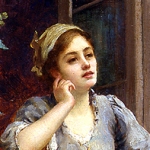 KNIGHT, DANIEL RIDGWAY (1839 - 1924)A Pensive Moment KNIGHT, DANIEL RIDGWAY (1839 - 1924)A Pensive Moment |
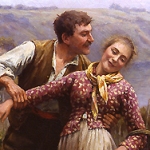 KNIGHT, DANIEL RIDGWAY (1839 - 1924)En Vendanges KNIGHT, DANIEL RIDGWAY (1839 - 1924)En Vendanges |
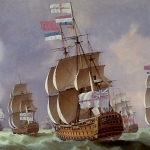 LUNY, THOMAS (1759 - 1837)Engagement Between Sir George Brydges Rodney and the Spanish Squadron, Commanded by Don Juan de Langara, Near Cape St. Vincent, January 16, 1780 LUNY, THOMAS (1759 - 1837)Engagement Between Sir George Brydges Rodney and the Spanish Squadron, Commanded by Don Juan de Langara, Near Cape St. Vincent, January 16, 1780 |
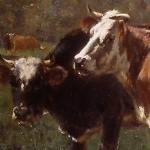 MARCKE DE LUMMEN, EMILE VAN (1827 - 1890)Vaches a Pâture MARCKE DE LUMMEN, EMILE VAN (1827 - 1890)Vaches a Pâture |
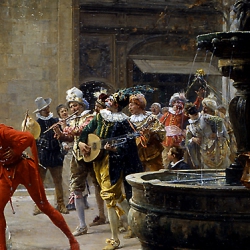 MOREAU, ADRIEN (1843-1906)Une Mascarade au XVII Siecle MOREAU, ADRIEN (1843-1906)Une Mascarade au XVII Siecle |
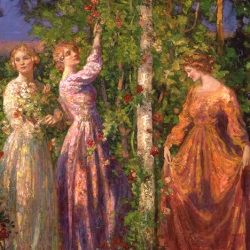 MOSTYN, TOM (1864 - 1930)Gather Ye Rosebuds While Ye May MOSTYN, TOM (1864 - 1930)Gather Ye Rosebuds While Ye May |
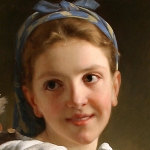 MUNIER, EMILE (1840 - 1895)La retour du marché MUNIER, EMILE (1840 - 1895)La retour du marché |
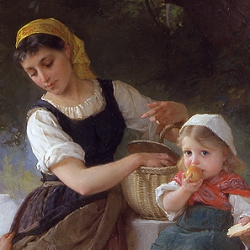 MUNIER, EMILE (1840 - 1895)May I Have One Too MUNIER, EMILE (1840 - 1895)May I Have One Too |
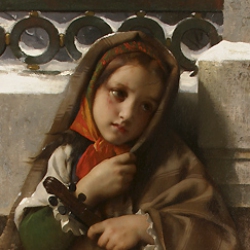 PERRAULT, LEON J.B. (1832 - 1908)Away From Home PERRAULT, LEON J.B. (1832 - 1908)Away From Home |
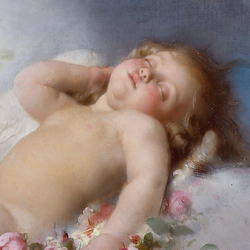 PERRAULT, LEON J.B. (1832 - 1908)Sleeping Putto PERRAULT, LEON J.B. (1832 - 1908)Sleeping Putto |
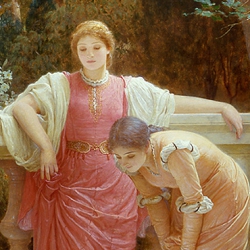 PERUGINI
, CHARLES EDWARD (1839-1918)The Green Lizard PERUGINI
, CHARLES EDWARD (1839-1918)The Green Lizard |
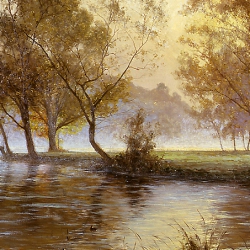 RIGOLOT, ALBERT GABRIEL (1862 - 1932)Soleil Levant dans la Brume RIGOLOT, ALBERT GABRIEL (1862 - 1932)Soleil Levant dans la Brume |
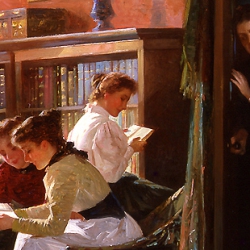 ROSSI, ALEXANDER MARK (FL.1870 - 1903)Forbidden Books ROSSI, ALEXANDER MARK (FL.1870 - 1903)Forbidden Books |
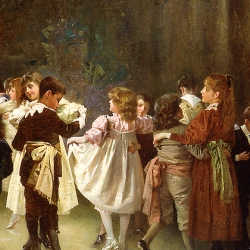 ROSSI, ALEXANDER MARK (FL.1870 - 1903)
May I Have This Dance? ROSSI, ALEXANDER MARK (FL.1870 - 1903)
May I Have This Dance? |
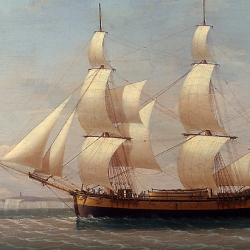 SALMON, ROBERT (1775 - c.1845)
The Estridge off Dover SALMON, ROBERT (1775 - c.1845)
The Estridge off Dover |
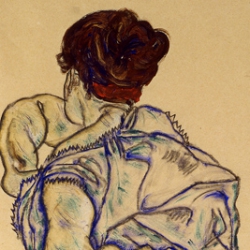 SCHIELE, EGON (1890 - 1918)Semi-nude with Green Stockings from the Back SCHIELE, EGON (1890 - 1918)Semi-nude with Green Stockings from the Back |
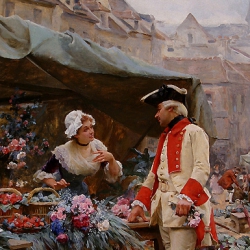 SCHRYVER, LOUIS MARIE DE (1862 - 1942)A Young Man's Fancy SCHRYVER, LOUIS MARIE DE (1862 - 1942)A Young Man's Fancy |
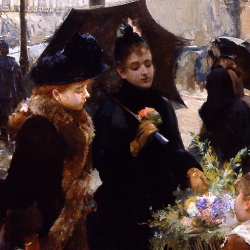 SCHRYVER, LOUIS MARIE DE (1862 - 1942)Après l’averse; - place du Théâtre-Français SCHRYVER, LOUIS MARIE DE (1862 - 1942)Après l’averse; - place du Théâtre-Français |
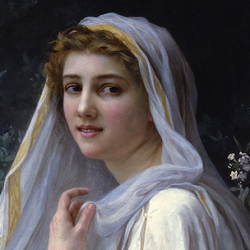 SEIGNAC, GUILLAUME (1870 - 1924)Reflections SEIGNAC, GUILLAUME (1870 - 1924)Reflections |
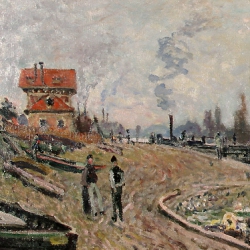 SISLEY, ALFRED (1839 - 1899)La Seine à Suresnes SISLEY, ALFRED (1839 - 1899)La Seine à Suresnes |
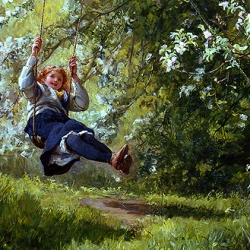 TOPHAM, FRANCIS W.W. (1838 - 1924)Young Girl on a Swing TOPHAM, FRANCIS W.W. (1838 - 1924)Young Girl on a Swing |
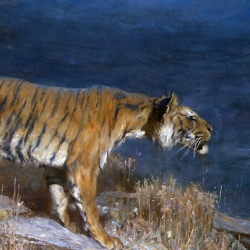 WARDLE, ARTHUR (1864 – 1949)The Deer-Stealer WARDLE, ARTHUR (1864 – 1949)The Deer-Stealer |
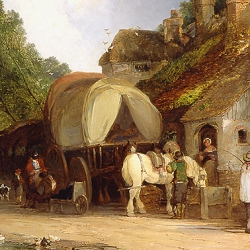 WILLIAMS, EDWARD CHARLES (1807 - 1881)The Old Roadside Inn WILLIAMS, EDWARD CHARLES (1807 - 1881)The Old Roadside Inn |
|
|
